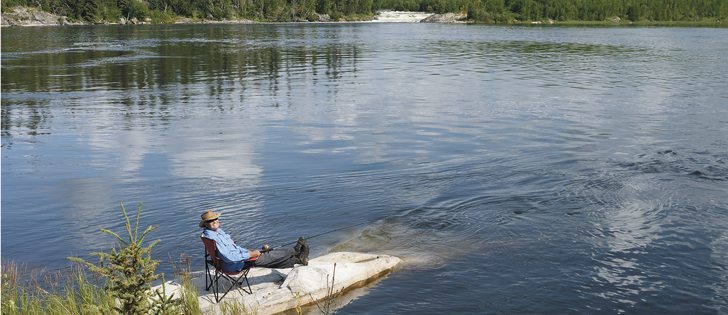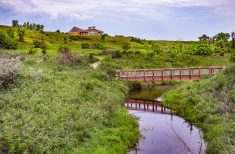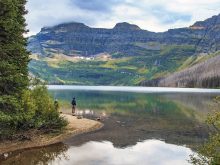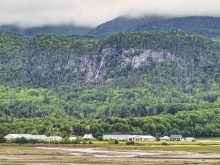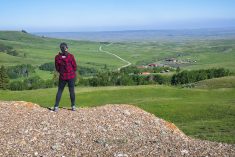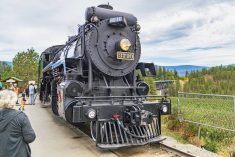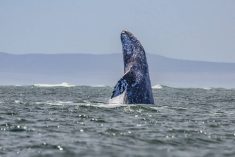Sitting on the smooth rocky outcropping jutting into the tiny lake, we looked over North Falls pouring out of Otter Lake and framed by brilliant green forest.
Behind us, we could hear the roar of another set of rapids emptying into Mountain Lake, the next in the long chain making up the Churchill River. It was like having our own private lake.
With serious whitewater on both ends, it is beyond the reach of motorboats, but fairly easy to access by canoe across a portage. We had intended to camp one night but stayed three.
Read Also

Fuel rebate rule change will affect taxes and AgriStability
The federal government recently announced updates to the fuel rebates that farmers have been receiving since 2019-20.
Dining on freshly caught walleye each evening, we enjoyed five-star views as eagles soared above and the haunting call of a loon echoed across the unspoiled wilderness. Summer just doesn’t get any better than this.
Running 1,600 kilometres across Saskatchewan and Manitoba, the Churchill River is the stuff of legends, made famous during the fur trade and the golden age of northern exploration, and now among the great waterways for canoe trips.
The easiest place to access the river is 80 kilometres north of La Ronge at Otter Lake, where you then head out onto some of the nicest sections.
The road crosses the Churchill at Otter Rapids, where the river surges out of Devil Lake through the narrow channel, creating a series of imposing haystack standing waves.
It was here in 1820 that Sir John Franklin’s Arctic expedition suffered its first casualty. They were tracking their canoes upstream when one got swept away by the current and overturned. One man made it to shore but the other was never found.
Today, running Otter Rapids is a popular sport. Cross the bridge’s pedestrian walkway on a warm summer day and there’s a good chance of seeing paddlers. Those on longer trips with loaded canoes will take the easiest route, trying to keep from getting swamped.
But those here to play will often test themselves on the bigger waves. While Otter’s monster waves look intimidating, even downright scary when you’re on the water, the rocks below are quite deep, so the rapids are considered less dangerous than those with exposed boulders.
About 10 kilometres upstream from Devil Lake, the Churchill seems to go every which way, dividing into different channels and forming a whitewater wonderland with rapids and waterfalls galore.
This is one of the most popular sections of the river, and an area often used for canoe courses and clinics for those wanting to upgrade paddling skills.
Since portage trails bypass most of the rapids and falls, it is relatively easy to travel part way upstream. To get there, start at the road-accessible Devil Lake campground, just a couple kilometres north of Otter Rapids.
Those wanting more of an easy-going paddle usually head downstream, starting at Missinipe and weaving through island-filled Otter Lake.
A highlight is the lake’s main southern outlet at Robertson Falls which spreads into a wide, staircase-like cataract with a beautiful spot to camp next to the water, just off the portage trail.
This popular route is the most direct, while the passage by way of North Falls, a bit farther to the east, is ideal if you like getting off the beaten path.
It’s the wide array of choices that really makes this part of the Churchill special. Only a short distance from the road, you can enjoy the thrill of adrenaline-pumping whitewater, follow the route of voyageurs or find a secluded wilderness hideaway.
Those who like getting wet should check out the annual Whitewater Festival near Missinipe, held this year on the July 1 weekend, with canoe clinics, a pig roast and a lot of playing around in rapids.
For more information, visit www.churchillrivercanoe.com.
Arlene and Robin Karpan are well-travelled writers based in Saskatoon. Contact: travel@producer.com.


